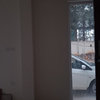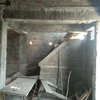How to Find the Perfect Light Shade
Every room can be enhanced by lighting, whether it is natural sunlight, lamps or other lighting fixtures. Light shades provide the finishing touches and give a more subtle, dramatic or colourful effect. The Return of Pendants Pendant lights over dining tables and in kitchen were all the rage in the 1960s and 1970s. They came in bold colours and patterns and were the last word in design. Over the decades, they fell out of favour, along with avocado-coloured bathroom suits. But today, as nostalgia for 1960s and 1970s interior design shows little sign of abating, and young householders are raiding their parents' or even grandparents’ old furniture, the pendant light is back. Pendant lights are versatile and offer lots of scope for decoration with the shades. They can become the focal point of any room. However, remember that a building’s electrical wiring has to be able to sustain the combined weight of the fixture and the shade. It is also worth ensuring that the shade does not hang too low and hit a tall member of the household on the head. Wattage Choice The selection of light shades available from http://www.dunelm-mill.com/shop/lights/light-shades/ includes many globe and ball lights, as well as other designs that are universally popular. All shades come with a recommended maximum bulb wattage that they can take. This is not determined by the lighting fixture. If the bulb wattage used is too high, the shade can be damaged or even catch fire. If the shade does take a high wattage, make sure that you have at least two inches of space between the shade and the bulb to allow for ventilation of the bulb’s heat. However, buyers often find that a low bulb wattage does not provide sufficient light through the shade. The secret is to find a bulb with both the correct wattage and a suitable lumen output. Shapes and Sizes The light shade should also suit the lighting fixture in terms of its size and shape. The plainer the lighting fixture, the more elaborate the shade can be. Busier-styled lamps require plainer shades. Shapes matter. Try to match the shape of the shade to the light base — square lamp with a square shade and a round lamp with a round shape. If the light is attached to a prominent base such as a vase, the shade could repeat the shape of the vase. But do not try to make the base and the shade compete for attention unless you are a talented designer who can break these rules with dramatic effect. In these cases, the eye is the judge. The style of the shade should match the decor of the room. It can be a playful shade for a child’s bedroom or any choice of contemporary and traditional styles in other rooms. If a light is to be used for reading, it should have a wider shade unless the light itself it is a directed halogen or LED light.




User
Related Discussions
Plz help me decorate this bedroom
Q
Need help as to how to put mirror on the bathroom wall
Q
HELP Any designer Done kitchen with these shades of merino laminates ?
Q
Seeking suggestion about a covered balcony area in bedroom.
Q